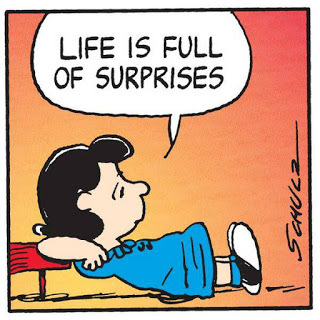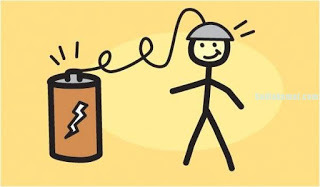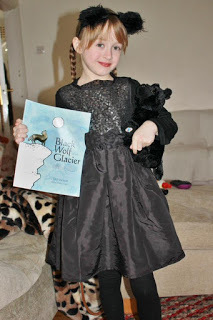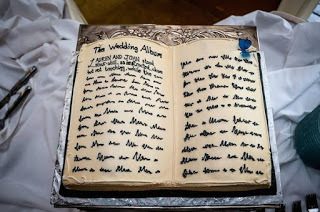Deb Vanasse's Blog: Book Birthday!, page 3
October 6, 2015
The Successful Author: Making Change
 Denali sunrise from my office window
Denali sunrise from my office windowWe humans are strange creatures. We crave routine, and yet in many ways, we’re inspired by change. As writers, we can tease out our best work by playing to both aspects of our creative selves.
At the end of my Jumpstart Your Writing workshop, I ask students to write down what will be different as they move forward with their projects—what they’ll allow themselves, what they’ll remember, what actions they’ll take. Among their responses are this yin-and-yang—creating “mini-routines” that get them into writing mode and also making changes that energize their work.
Among the changes that can move your writing forward:
Break free of the linear: In our culture, we’re trained from a young age to think and work in linear ways, from beginning to middle to end. But especially in the early stages of a writing project, linear thinking inhibits creativity. There’s no reason to write straight through from beginning to end. Stuck in the middle? Jump ahead. Write key scenes from later in the piece. Write your ending. Then go back and fill in the rest.
Switch up the way you write: Writing will never be efficient, but with the advent of word processing, writers are able to work faster than ever. Still, typing has disadvantages. Handwriting jars us out of the keypad-to-screen rut. By putting pen to page, you can explore in more freewheeling ways. Visual activities such as mapping, illustrating, and webbing help you access the more creative parts of your brain.
See your work differently: When it’s time to revise—literally, to re-see your work—find ways to make it look different. Change the font. Load up the file on an e-reader. String a line across your work space and hang pages with clothespins. Spread pages out on the floor.
Acknowledge the reader’s desire for change: Part of what keeps readers turning the pages is their desire to vicariously experience change. Active readers enjoy anticipating how characters, setting, and event will activate changes in a protagonist. A helpful goal for a writer: By the end of each scene, at least one of the characters has experienced a change of mood, attitude, or direction. A slight change, perhaps, but a change.
Refresh yourself with new perspectives: Writing retreats and residencies aren’t just about getting away from it all. One reason so much good work happens there is that changes habits and scene nudges us to think and see in new ways. Travel is wonderful, but there are other ways to shake things up. Take a writing workshop. Join a writing group. Write in new places that are easily accessible from your home. Write in new places within your home. The bathtub? Sure. Just remember that water and laptops don’t play well together.
As I write this post, I’m in the midst of acting on this last point—packing up to leave Alaska after thirty-six years. It’s hard to leave the familiar, especially as wild and beautiful as Alaska, landscape on a scale that amazes no matter how long you’ve lived here. A place where the routine never feels routine, where even daily walks with the dog immerse you in natural wonder.
Alaska is also the place where I've grown into myself as a writer. It's where I've written all my published work (and a good amount that's unpublished). It's where I’ve enjoyed the generosity and warmth of the writing community at 49 Writers. A place where I’ve even built something of a reputation, with one Library Journal reviewer kindly referring to me as “one of Alaska’s leading storytellers.”
Still, I’m excited about the new perspectives that come with relocating, a prospect I hadn’t entertained until a few months ago, when my husband suggested a move to the Oregon coast. Family and job prospects (his) are a huge draw, as is living within walking distance of the ocean. I’ll miss the Denali sunrises, viewed from my office window. I’ll miss the moose strolling through the yard. And I’ll miss my friends and writing colleagues.
Alaska has been good to me in more ways than I could ever name. And in some small way, I hope I’m leaving it a little better than I found it.
But change is good. I intend to make the most of it.
Co-founder of 49 Writers and founder of the independent authors cooperative Running Fox Books, Deb Vanasse has authored sixteen books. Her most recent are Write Your Best Book, a practical guide to writing books that rise above the rest; What Every Author Should Know, a comprehensive guide to book publishing and promotion; and Cold Spell, a novel that “captures the harsh beauty of the terrain as well as the strain of self-doubt and complicated family bonds,” according to Booklist. Her next book, Wealth Woman: Kate Carmack and the Klondike Race for Gold, comes out in April, 2016. A regular contributor to the IBPA Independent, her views here are her own.
Published on October 06, 2015 11:02
September 22, 2015
Author Tips for Success: Beyond the Book Launch

Good surprise, bad surprise.
Last week was the good kind. My husband brought me the Sunday magazine from our local newspaper—we subscribe to the online edition, so a hard copy is a rare thing around here. I assumed there must be something in it he wanted me to see, so I began turning pages. Lo and behold, three pages of the magazine were devoted to an article featuring and reviewing two e-book anthologies I’d co-edited with author David Marusek.
If either of the books had been newly released, I would have been pleased—of course—but not surprised. But one title came out half a year ago and the other a year and a half ago. The reviewer spoke highly of both editions as well as our authors’ co-op, Running Fox Books.
As a result, we’ve seen an uptick in downloads. More significantly, Tip Jar donations rolled in, thanks to the journalist pointing out the Tip Jar feature as part of his write-up.
The bad surprise isn’t news to anyone who’s been publishing for any length of time. After the launch, sales on most books taper off. There are exceptions, of course—audiences that grow over time—but upheavals in the publishing industry still haven’t changed the fact that the market tends to be launch-centric.
However, that nice newspaper coverage long after launch proves that there are ways for fresh energy to flow toward a book long after its release. Here, four ways that can happen:
· Special sales at events that feature a topic related to your book: As a reporter for the IBPA Independent, I’ve come across lots of proof that special sales to target markets can increase a book’s sales substantially over time. For this reason, I’m looking forward to an onstage conversation at our local museum Oct. 4. The topic is the future of fiction, and the bookstore will be featuring fictions by all four participants.· Teach from your book: This old trick of college professors—write a book and then make it required reading for the course you teach—has applications outside academia. This weekend, I’m teaching a workshop, Jumpstart Your Writing, for our local writing center. As part of the course fee, students will receive a copy of Write Your Best Book, one of two books I’ve written on writing and publishing.· Media coverage: The article on the Alaska Sampler series in our local paper is but one example of how media coverage can boost interest in your books. Send press releases for your books, and make sure they’re tied to items of interest to the media. Don’t be surprised if it takes awhile to see results, as was the case with our Sampler coverage.
· Book Clubs: Because book clubs generally make their selections a full year in advance, it may take some time before they begin picking up your title for discussion. Book clubs also rely heavily on word of mouth, so the post-launch potential for interest may extend for years after launch. In early October, I’ll be Skyping with a library book club that’s featuring my novel that came out more than a year ago.
Co-founder of 49 Writers and founder of the independent authors cooperative Running Fox Books, Deb Vanasse has authored sixteen books. Her most recent are Write Your Best Book, a practical guide to writing books that rise above the rest; What Every Author Should Know, a comprehensive guide to book publishing and promotion; and Cold Spell, a novel that “captures the harsh beauty of the terrain as well as the strain of self-doubt and complicated family bonds,” according to Booklist. Deb lives and works on Hiland Mountain outside of Anchorage, Alaska, and at a cabin near the Matanuska Glacier. A regular contributor to the IBPA Independent, her views here are her own.
Published on September 22, 2015 12:26
September 9, 2015
Jumpstart Your Writing
 Image from moviewriternyu.wordpress.com
Image from moviewriternyu.wordpress.comYou love to write. Why, then, can it be so hard to get started—or to finish a project that you began with enthusiasm?
An abundance of metaphors prove that this affliction is nearly universal among writers. Your muse needs to visit. Your creative well needs filling. Your batteries need recharging.
Whenever I teach a writing workshop, I find a good number of the participants are in exactly this place with their projects. They’re excited about an idea. Maybe they’ve started drafting, or they’ve finished a draft. But somewhere along the way, they’ve lost momentum. They want to finish, and finish well—if only they could see their way through.
The good news: It’s not all that tough to jumpstart your writing. Here, a few ways to get yourself going:
· Rediscover what you love about your work: Read through the last five pages you wrote. Don’t make any changes. Instead, bracket the three parts you like best—words, sentences, or sections. Copy one of those best parts onto a clean page and use it as springboard for ten minutes of freewriting. Don’t worry about where it’s going. Just write.· Shamelessly imitate: Choose a passage you love from a writer you admire. With pen in hand, unlock its secrets. In the margins, make notes about how it works. Then, using a topic or scene of your own, write a passage that consciously imitates it. Will your effort fall short? Of course. But even the masters are approachable.· Read a writer on writing: Read (or reread) what one of your favorite writers has to say about writing. The Paris Review interviews, available online, are a great source. Take comfort in the struggles you share—and the fact that these can be overcome.· Talk writing with writers: Meet with your writers group. Attend a reading, a conference, a workshop.
On this last point, I’m prepping to teach a six-hour workshop for writers like you: Jumpstart Your Writing, from 9 am to 4 pm (with an hour lunch break) on Saturday, September 26. Through guided exercises and discussion, we’ll generate ideas, amplify words on the page, and write past stuck points. We’ll explore the writer’s mind, the writing process, and narrative essentials like character, setting, and pacing. We’ll examine and refine our writing processes while exploring techniques to mine and enrich the material from which we write.
Included in the workshop fee is a copy of Write Your Best Book . But you don’t have to be working on a book—our focus will be on re-energizing all types of writing. So whether you’re a novelist, an essayist, a memoirist, a poet, or a dabbler in writing of all types, we’d love to have you join in. You’ll leave with your batteries charged, your well filling up, your muse on your shoulder. Registration is required, so sign up today.
PS: “Jumpstart Your Writing” will be the last workshop I teach in the Anchorage area, at least for the foreseeable future. After 36 years in Alaska, I’ll be leaving in mid-October. More on the Big Move in next month’s post!
Co-founder of 49 Writers and founder of the independent authors cooperative Running Fox Books, Deb Vanasse has authored sixteen books. Her most recent are Write Your Best Book, a practical guide to writing books that rise above the rest; What Every Author Should Know, a comprehensive guide to book publishing and promotion; and Cold Spell, a novel that “captures the harsh beauty of the terrain as well as the strain of self-doubt and complicated family bonds,” according to Booklist. Deb lives and works on Hiland Mountain outside of Anchorage, Alaska, and at a cabin near the Matanuska Glacier.
Published on September 09, 2015 06:00
August 25, 2015
In Love with a Book? Ten Ways to Show It!
 Adoring reader from the UK, dressed up as the black wolf from one of my books
Adoring reader from the UK, dressed up as the black wolf from one of my booksAt a conference, I picked up a list of 20 Ways to Help an Author, distributed by Wise Ink. I like the concept, but not how it’s framed—while I love my readers, I don’t believe they owe me anything.
Shift the focus from author to book and I’m all in. Here, a list of twelve ways to show your love for a book. These take little time, effort, or money, but the payoff is huge - helping a book you love enjoy a long, happy “shelf life”:
· Buy the book!· Gift the book!· Ask for the book when you’re browsing a book shop.· Review the book online: Goodreads, Amazon, Barnes & Noble.· Post about the book on social media. (Include a photo)· Ask for the book at the library.· Email a “book love note” to the author.· Suggest your book club read it.· Blog about the book (send the author a link!)· Nominate the book for your community’s reading program· To celebrate International Book Day, dress up as a favorite character from the book (see photo above)· Design a wedding cake based on the book (see photo below)
What have you done today to show your love for a book? These ideas are only a start. With so much clamoring for readers’ attention, every expression of book love makes a difference…and as a bonus, you’ll be encouraging your favorite authors to continue writing books you love.
 Wedding cake themed to a novella by David Marusek
Wedding cake themed to a novella by David Marusek
Published on August 25, 2015 06:00
August 18, 2015
The Successful Author: Back to School
 My current reading/research/study stack
My current reading/research/study stackLong lines at the hair salon, store shelves stacked with notebooks, bus drivers practicing their routes—you can’t miss the signs that the back-to-school season is upon us. After twenty years as a college and high school teacher, I still enjoy that fevered pitch of a new school year about to get underway.
Even if you’re not headed back to a classroom, now is a great time to turn a bit of your energy toward your continuing education as an author. In lieu of school—or to supplement it—try these:
· Subscribe to a magazine that centers on writing or books: Poets and Writers, The Writer’s Chronicle, The Writer, Writer’s Digest, Publishers Weekly, Bookforum, The New York Review of Books· Read like a writer, in your genre. Make a reading list and set tangible goals for working through it. (For more on reading like a writer, see Write Your Best Book .)· Start or reinvigorate your journal. Journals aren’t just for musing. Use yours to spin ideas, play with plot, develop your characters, note“best practice” models of style and structure, even build vocabulary (words are the tools of your trade!)· Make plans to attend a writer’s retreat or conference.· Apply for a writing residency.· Start or reinvigorate a writers group aimed with critique and support components· Sign up for a creative writing class at your local writing center or online.
Don’t miss out on one of the best things about being an author—you’re always learning!
Published on August 18, 2015 06:00
August 11, 2015
Low-Cost (or no-cost) Book Promotion
 Image source: www.successfulstartup101.com
Image source: www.successfulstartup101.comSpend a little time around published authors and you’re certain to hear this common lament: Regardless of how you publish, it’s tough to get your book noticed. Once the launch window passes—generally within three months (or less) of the book’s release, reader and publisher interest wanes.
Authors are a tenacious bunch, committed to seeing a project through to its finish, drafting and revising and revising again. So it’s no surprise that we don’t give up on our books once they’ve launched, no matter how tough the going gets. We want a shelf life of more than three months for our books. There are readers out there who’d love to connect with our work—if only they could find it amid all the noise of new releases and celebrity titles.
In a desperate effort to get their books noticed, far too many authors throw good money after bad: Self-funded author tours in second-rate venues where only a handful of people show up for signings; expensive ads to the wrong demographic; for-hire social media campaigns that amount to little more than shouting into the wind.
It doesn’t have to be that way. During a delightful weekend with Susan McBeth of Adventures by the Book, we chatted about the many ways that published authors can promote their books long past the launch. Here, a few ideas that won’t break the bank:
Ticketed Book Events: Team with an event planner for a ticketed eventdesigned a target audience eager to hear about you and your work. If your work is of real merit and you’re a lively speaker, the event planner will be able to set ticket prices in a way that covers her efforts. The benefit to you: book sales at such events are typically much higher than at plain-Jane bookstore signings.
Fundraisers:If your book is themed toward a cause that matters deeply to you, connect with a nonprofit devoted to the cause. If your book is of merit and you’ve got an engaging program, team up for a fundraising event in which you provide the program and donate a percentage of the book sales. (Click here to see what author Marivi Soliven did.
Annual Event: In 2010, I launched a simple plan through 49 Writers, a nonprofit I co-founded to support the artistic efforts of Alaska authors. We designated the first week in October (conveniently timed to coincide with Alaska’s Permanent Fund Dividend deposits) as Alaska Book Week, to remind readers everywhere about the incredible books written by Alaskans and about Alaska. That year and every year since, the Governor has issued a formal proclamation designating the first week in October as Alaska Book Week. And each year, authors are invited to complete a simple participation form in which they can express their interest in addressing audiences about their books. To complete this form costs nothing but a minute or two of the author’s time. The payoff: the author joins forces with other Alaska authors in a weeklong celebration of their books. Why not join forces with other authors to create an annual event to celebrate books like yours?
Collaborative Blog: Blog tours for your book can be tedious to organize and carry out, and most bloggers are only interested in your books when they’re brand new. As for your own blog—well, it takes time to build a strong readership, and in the meantime you may feel as though you’re shouting into the wind. But if you join forces with other authors and offer them opportunities to showcase their good work, everyone benefits from the increased readership. Through the well-read 49 Writers blog, we offer a Spotlight on Alaska Books feature, where Alaska authors can share their books, old and new. We also offer Alaska Shorts, a venue for authors to publish their creative work (or an excerpt from a longer project). And of course, we’re always interested in guest posts that are relevant to our readership. A collaborative online presence expands everyone’s reach and shows readers that you’re actively engaged with the literary community.
Before you utter another complaint about how hard it is to get your work noticed, make sure you’ve considered these opportunities to engage with readers. The only cost is your time - and not much of that!
Co-founder of 49 Writers and founder of the independent authors cooperative Running Fox Books, Deb Vanasse has authored sixteen books. Her most recent are Write Your Best Book, a practical guide to writing books that rise above the rest; What Every Author Should Know, a comprehensive guide to book publishing and promotion; and Cold Spell, a novel that “captures the harsh beauty of the terrain as well as the strain of self-doubt and complicated family bonds,” according to Booklist. Deb lives and works on Hiland Mountain outside of Anchorage, Alaska, and at a cabin near the Matanuska Glacier.
Published on August 11, 2015 12:56
August 4, 2015
The Successful Author: The Heart of Your Book

What’s at the heart of a successful book? A multitude of answers could be offered up: an intriguing premise, engaging characters, a strong voice, a plot that twists and surprises.
Before you get caught up in a debate about which of these book elements matters most, consider this: At the heart of a book is, quite simply, its heart. As in the human body, it muscles ceaselessly, behind the scenes. Without it, you have the shell of a thing, but no life. The means to finding the heart of a book—the stethoscope, if you will—comes through posing a simple question of yourself as its author: What’s this book really about?
A book’s heart isn’t the same as its topic or its sales pitch or its premise, though articulating each of those can be helpful to your overall understanding of your project. The heart is the book’s life source, the reason you’re compelled to write it, no matter the cost in time and energy and frustration.
The heart of a book isn’t likely apparent until you’ve begun writing. It shows itself in the parts that please you most, in the places where you find yourself lingering, in the areas where the language soars. It’s what excites you about the project, what keeps you going back to it day after day. If you have multiple books in you, the heart of one will often form itself in another, whether you intend it or not. That’s because the heart is what matters to you—and to your readers.
In school, we don’t learn to search for the heart of a book; we learn look for its topic and themes, which are far more cerebral. The Adventures of Huckleberry Finn? It’s about a raft trip down the Mississippi: that’s the topic answer. It’s about innocence and experience, freedom, coming of age, friendship: those are theme answers, intuited after the fact, Big Ideas to be outlined and proven.
The beat of the book’s heart can’t be dissected, only felt: the lure of a wide, muddy river; the banter of boys; the fool’s play of pretension.
Did Twain know the heart of his book? Perhaps not. Halfway through, he stopped writing, and when he picked up again, the second half was noticeably less heartfelt than the first.
What’s your book about? It’s a question worth asking. The answers can lead you all the way to its heart.
Published on August 04, 2015 14:43
July 21, 2015
Sell That Book!
 Image source: wikihow.com
Image source: wikihow.comDo you dream of selling your book to a big New York publisher?
I’ve done that, but the market is ever-changing, and so it’s always nice to get an update on what counts most in today’s acquisition decisions.
Here, a few items of note from a recent session on the subject with literary agent Jeff Kleinman:A manuscript must deliver. That means an agent or editor can’t put it down. It’s gush-worthy.Want to impress a big publisher with your social media presence? You’ll need at least 25,000 followers—and that’s just in one spot, not combined across platforms.Publishers want big books, the ones that will generate big sales.If you write fiction, agents and publishers most want your first novel.If you write fiction or memoir, your manuscript must have narrative urgency.If an agent or editor tells you that she didn’t fall in love with your manuscript, that generally means the characters aren’t strong enough.Your log line, or sales handle, is crucial. It should represent your core understanding of your book. Drill it down. It has to travel, meaning that it’s pithy and repeatable.You should know exactly where your book would be shelved in a bookstore.You should know the audience for your book, not in general (i.e. middle-aged women) but in terms of clearly delineated groups.When your book goes before a publisher’s sales team, it’s good to have two noteworthy authors lined up endorse it—not at the meeting, but in cover blurbs if the book is accepted.A huge problem: authors send out their work before it’s ready.
Co-founder of 49 Writers and founder of the independent authors cooperative Running Fox Books, Deb Vanasse has authored sixteen books. Her most recent are Write Your Best Book, a practical guide to writing books that rise above the rest; What Every Author Should Know, a comprehensive guide to book publishing and promotion; and Cold Spell, a novel that “captures the harsh beauty of the terrain as well as the strain of self-doubt and complicated family bonds,” according to Booklist. Deb lives and works on Hiland Mountain outside of Anchorage, Alaska, and at a cabin near the Matanuska Glacier. A regular contributor to the IBPA Independent, her views here are her own.
Published on July 21, 2015 06:00
July 14, 2015
The Writing Zone

Every now and then, my husband catches me staring off into the distance, paying no attention at all to what’s going on around me. The Vanasse Zone, he calls it.
Actually, it’s the Writing Zone, where we writers yield to the creative happenings inside our heads. When you’re a writer, the Writing Zone is the place you most want to be. Ideally, it happens while you’re at the keyboard, putting words on the page. Ways you’ll know you’re in the Zone:
· Words flow so quickly your fingers have a hard time catching up. You don’t second guess every line. You simply write· As you go with the flow, you’re excited about the discoveries that are unfolding in your work. But you don’t stop to laud them. You keep writing.· Unintended inspiration shows itself. Snippets of what you’ve read and experienced make their way into your project without any sort of planning.· After your writing session has ended, the ideas keep coming. You run back again and again to your notebook to jot them down.· When you catch a glimpse of yourself in the mirror, you’re wearing a goofy grin. You’re in the Zone. What could be better?
Our best work happens in the Zone. How to get there? It’s not all that hard:
· A short opening ritual helps. Prolific novelist Alexander McCall Smith plays background music of a different type for each of the series he writes. You can read about my ritual here.· Quit trying to sound writerly or brilliant or important. Let the authentic voice for your project lead the way. · Nix the perfectionist. There will be time later to assess and revise. For now, just write.· Ditch your linear expectations. If you get stuck in the middle, jump ahead and write a scene or section. Write a few. Then go back and connect them.· Once you reach altitude, find your cruising speed and stick with it. It’s all about the words on the page—in the end, that’s the only way to get and keep momentum.
Published on July 14, 2015 10:16
July 7, 2015
Writing Advice to Ignore

Many years ago, I went bowling with a big group, all of us related in one way or another. I love to recreate as much as the next person, but in general, bowling isn’t my idea of a good time, and this particular outing became especially fraught as one by one, nearly everyone in our group—fortified by beer—tried to turn me into a bowling superstar with his or her advice.
Hold the ball this way. No, that way. Pivot here. No, like this. Slide. Don’t slide. Swing back more. Swing back less.
Not a fun night.
Advice is lovely, as long as it’s measured and proven and consistent. But in our eagerness to help, we often fail to consider how contradictory and even potentially damaging a bit of oversimplified advice may be.
Here, some common writing advice worth ignoring (or at least thinking through):
§ Focus on the main character: While it’s true that readers will want to empathize with your protagonist, it shouldn’t be at the expense of your secondary characters. Even minor characters should be memorable.
§ If your work is literary, emphasize character; if you write genre fiction, emphasize plot: Character and plot are too deeply intertwined to be separated. No matter what the genre, readers expect engaging characters and riveting stories.
§ Show, don’t tell: A common beginner’s mistake is to substitute exposition for scenes that show rather than tell. But don’t overcorrect. If you eliminate all telling, you’re missing out on opportunities for reflection, emotional depth, and narrative distance.
§ Reveal what you know: In some ways, good writing is like a comedy act—it’s all in the timing. Knowing when and where to withhold is essential to creating narrative tension.
§ You’re either a pantser or a plotter: These are fun, handy terms for describing a writer’s process. A pantser writes by the seat of her pants; as words spill onto the page, she watches her work find its shape. A plotter plans out her book, then writes to the plan. But while some of us may lean in one direction or the other, our best writing often comes from a combination of pantsing and plotting.
Published on July 07, 2015 06:00
Book Birthday!
Happy Birthday to my latest book, https://www.goodreads.com/book/show/5...! Thanks to West Margin Press for bringing it into the world and to authors C.B Bernard, Bill Streever, Gary Krist, Caroline V
Happy Birthday to my latest book, https://www.goodreads.com/book/show/5...! Thanks to West Margin Press for bringing it into the world and to authors C.B Bernard, Bill Streever, Gary Krist, Caroline Van Hemert, and Kim Heacox for their endorsements!
...more
- Deb Vanasse's profile
- 39 followers



